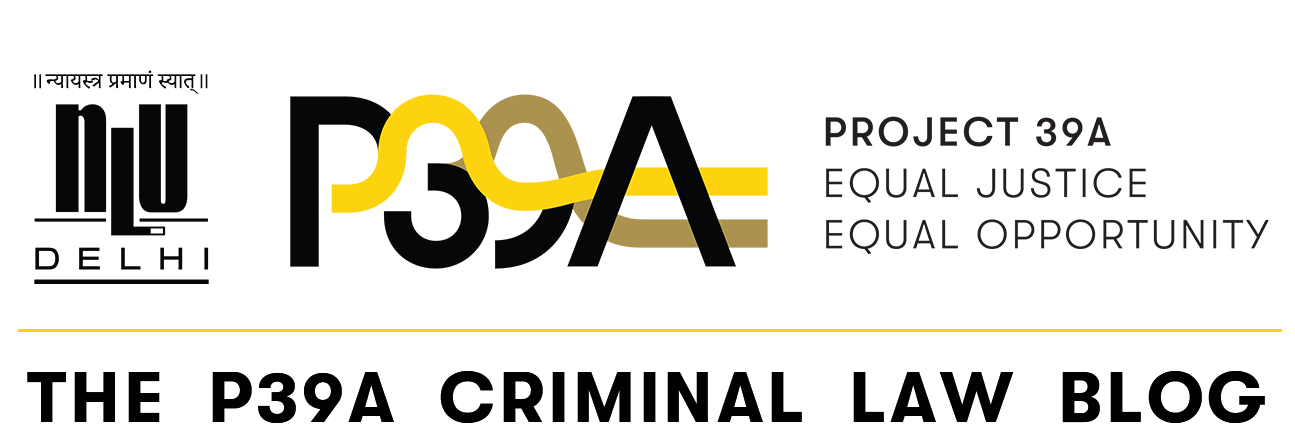
Prateek Chadha
ADM Jabalpur is far and away the most reviled decision that the Supreme Court has ever produced. In short, the Court held that it was constitutional for the State to arrest a citizen without giving any justification for the arrest. And if, according to the State, the arrest was in response to a threat to the nation’s security, the courts could not intervene. In essence, the Supreme Court, that described itself as a ‘sentinel on the qui vive‘ of Fundamental Rights, held that the State could ignore those very Fundamental Rights when it so chooses.
To compensate, soon after the Emergency, the Supreme Court took several steps to advance Fundamental Rights. Nevertheless, the blot of ADM Jabalpur was so horrific that it remained a valid precedent for about four decades, even though it was widely acknowledged as the Court’s nadir. No Judge of the Supreme Court itself ever wanted to discuss what the Court had done. The only acknowledgement of the judgment’s existence, by the Supreme Court, was to have Justice Khanna’s portrait prominently displayed in the Court. The Supreme Court finally overruled ADM Jabalpur in 2017 in Puttaswamy v. Union of India. But lo and behold, five years later – we are right back to where we started.
Last week, a Bench of the Supreme Court, in Vijay Madanlal Choudhary v. Union of India, held that various aspects of the Prevention of Money Laundering Act, 2002 [‘PMLA’] were constitutional. The devil, however, is in the detail. It is not merely the upholding of the PMLA, but the reasoning of the court and the way the judgment arrives at its conclusion, that raises cause for concern. There are two things which the judgment does that may (to the uninitiated) seem unconnected.
First, it revives the draconian pre-conditions for the grant of bail contained in s. 45 of the PMLA. The judgment holds that it is constitutional to require that for the grant of bail, an arrested person must demonstrate to the court that ‘there are reasonable grounds for believing he is not guilty’ of the offence of money laundering. In other words, for bail, an accused must prima facie establish, before the court, that he has not done what the Enforcement Directorate [‘ED’] says he has. This is a tall order, especially as money is fungible by its very nature. It is impossible to show knowledge of where a party that a person has transacted with has obtained their funds. Thus, as per the standard upheld by the Court in Vijay Madanlal Choudhary, an accused will be called upon to prove that an event did not transpire, and if he cannot prove the negative, he will continue to languish in prison.
To get to this point, the Court had to overcome a previous decision of the Supreme Court in Nikesh Tarachand Shah’s case, where this condition of bail under the PMLA had been held unconstitutional. The Court, in Vijay Madanlal Chaudhary, did this by overruling the said decision. It reasoned that in Nikesh Tarachand Shah’s case, the judges had wrongly concluded that the court’s approach to the rights of a person accused of terrorism under TADA could not be applied to an offence such as money laundering since it was a less heinous offence. To the contrary, the Bench held that the money laundering offence was as heinous as a terrorist act, and posed just as significant a danger to the sovereignty and integrity of our country. In doing so, the Court seemed to overlook the fact that the way money laundering is defined in the PMLA is very wide, and includes dealings with money associated with the commission of almost any crime [including offences relating to infringement of copyrights, violation of trademarks, arts and antiquities, securities, information technology, companies, air and water pollution etc.].
Second, it took the view that the ED does not need to share the Enforcement Case Information Report (ECIR) with the accused. The ECIR is a document that does not find any mention in the PMLA and appears to exist as a result of a provision of the ED Manual. Conveniently, the Court held that even the ED Manual must be a secret document the likes of you and me have no business looking at, even though we can look at the equivalent documents for the police, CBI, customs department, and income tax department, amongst others. Crucially, the ECIR is the PMLA equivalent of the First Information Report [‘FIR’]. It contains the gist of why the ED feels that there has been an offence under the PMLA that requires further investigation. However, according to the Court, an ECIR cannot be equated with an FIR, though it provides no reasoning to justify this. Consequently, the Court holds, that unlike the FIR, there can be no constitutional requirement of giving the accused a copy of the ECIR, because this may defeat any attachment of property under the PMLA as the accused might move such property beyond the realm of attachment and defeat the very purpose of the law. Again, the Court does not address how an accused who is in custody might be able to do this or, for that matter, how the ED would not make good by attaching other properties of equivalent value, as permitted under the PMLA. According to the Court, the Fundamental Rights of the accused are satisfied if he is informed of the ‘grounds of his arrest’ at the time of arrest, and there is no need to share a copy of the ECIR with him. Interestingly, there is no real definition of what qualifies as grounds for arrest and how detailed such ‘grounds’ need to be. Typically, criminal arrest memos will only inform you of the section(s) under which you are alleged to have committed an offence along with the case/investigation number. So it is probable that the Court’s requirement will be fulfilled by the ED telling an accused under the PMLA that he is being arrested for an offence under Section 3 of the PMLA pursuant to investigation in ‘ECIR No. X’.
When you combine these two developments, for a person arrested under the PMLA to get bail, he will have to show that he has not committed an offence under the PMLA without knowing the specifics of what transactions are being called money laundering or what assets are being labelled proceeds of crime. This is beyond impossible. No judge will ever be able to take the view that an accused has prima facie shown that he has not done what the ECIR alleges when the accused has to show this without knowing what is in the ECIR. As the Additional Solicitor General SV Raju argued before the Delhi High Court, according to the Supreme Court judgment, only grounds related to the accused’s health can now be used for the grant of bail under the PMLA. Thus, the effect of this judgment will be that no accused will ever be able to obtain bail under the PMLA once the ED takes the view that they have committed an offence. To add to this toxic cocktail, an accused can be made to sign confessional statements while in custody, which might then be presented to the judge at a bail hearing as well (since the judgemnt also holds that a confessional statement to an ED officer is admissible as evidence). Thus, the judgment in Vijay Madanlal Choudhary v. Union of India has created a situation where the State can arrest anyone without telling them precisely what crime they are supposed to have committed and where no court will be able to release them for an extended period. Differently put, history has repeated itself, and we have arrived back at ADM Jabalpur.
Prateek Chadha is an Advocate on Record in the Supreme Court of India. He appeared for some of the petitioners in Vijay Madanlal Choudhary v. Union of India.





